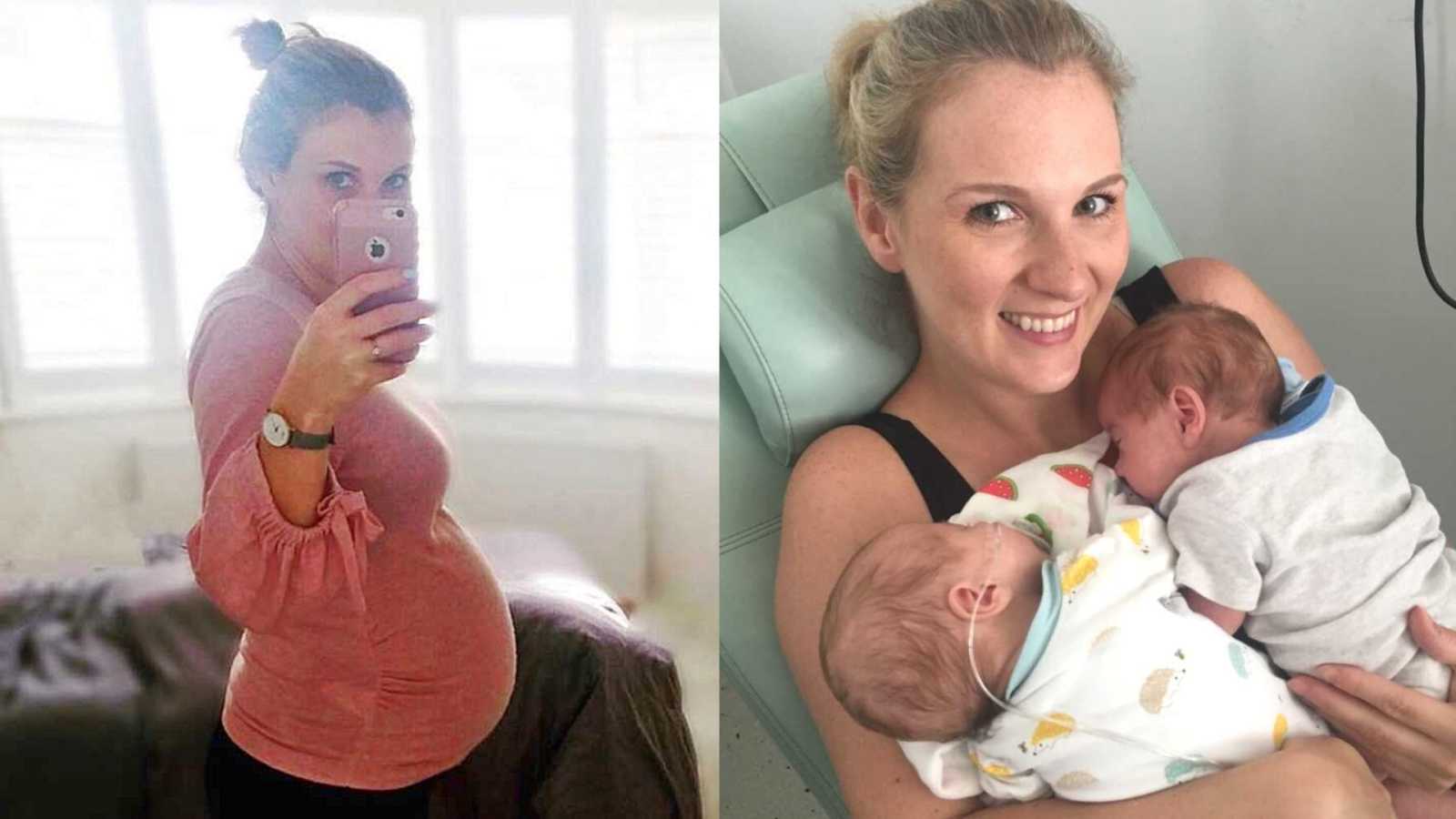“In November of 2013, I was at work when my water broke. I was 34 weeks pregnant with my first child and I was terrified. Two days later, I gave birth to a healthy 6-pound, 4-ounce baby boy. We spent 10 days in NICU with him and it was the most traumatizing 10 days of my life up to that point. When we got him home, things were difficult. We were riddled with anxiety and hovered over him constantly. He had colic and reflux, cried a lot, and didn’t sleep. It took a long time for us to find ourselves again but a few years later, we felt ready to try for another child. It had happened fairly quickly the first time around so we had no reason to expect anything would be different this time. However, 2 years later, we still weren’t pregnant.
Finally, in October of 2018, I got that long-awaited positive. Scared about the possibility of having another premature baby, I arranged to have an early scan before talking to a consultant. At 9 weeks pregnant, we went to the hospital and were thrilled to see a little bean wriggling away on the screen. After a pause, I began to feel worried as the sonographer appeared to be checking something. I glanced nervously at my husband and she said, ‘It’s twins. Did you know?’ I immediately burst into terrified tears. She went on to say it looked like they shared a placenta, which meant they would be identical. All I could think was, ‘If I couldn’t even get one baby here safely, there’s no way I can manage it with two.’ Little did I know what was to come.
At 12 weeks pregnant, we went for another scan. In the UK, they offer combined testing for fetal anomalies, which consists of blood tests and an ultrasound. The results of these combined with other factors, such as your age, give you a risk factor for chromosomal abnormalities. During the ultrasound, I noticed the nuchal translucency (fluid behind the neck) measurement was quite high, which I knew wasn’t a good sign. I felt sick as we were whisked into a side room and referred to a specialist fetal medicine center in London with an appointment for the next day. When we got there, we were told the high measurement suggested one of three possibilities: there was a genetic abnormality, one or both of the twins had a heart defect, or we were at increased risk of something called Twin to Twin Transfusion Syndrome (TTTS), a serious disease that can affect twins (or triplets, quads, etc) who share a placenta. At this point, we didn’t know much about TTTS and were more concerned about the other possibilities but after a non-invasive prenatal test came back as very low risk for genetic abnormalities and a fetal heart echo came back clear, we were left with an increased risk of TTTS being our most likely possibility.
Twin to Twin Transfusion Syndrome occurs when abnormal blood vessel connections form in the placenta resulting in the blood flow being diverted from a ‘donor’ twin to a ‘recipient’ twin. This results in the donor twin becoming smaller than usual and the recipient twin becoming larger. Without treatment, the survival rate is 10-15%. The most effective treatment is laser surgery on the placenta to close the connecting blood vessels. The plan was we would be monitored weekly. Each time we got through an ultrasound unscathed, I would be on a high for a couple of days. As we neared the next appointment, I would start to feel sick again, dreading whatever news the next scan might bring.

I didn’t tell my friends I was pregnant unless I saw them face to face. There was no social media announcement, no baby shower, no gender reveal when I found out I was having two more boys. If people saw me with my bump, I was at pains to tell them although I was pregnant with twins, I might not end up with any babies at all.
I read everything I could about TTTS. I joined Facebook groups full of parents who had fought or were fighting this disease with a variety of outcomes. I read medical journals quoting statistics, I googled incessantly, and I cried a lot. Yet at every scan, things were looking good. Until we reached 24 weeks. At our 24 week ultrasound, the day we’d been dreading finally arrived. Not only did I have TTTS, but I had it really really bad.
TTTS has five stages graded on the Quintero system, with stage one being the earliest stage and stage five being the death of one or both twins. By the time mine was found, I was at late stage four, meaning both boys were in a very bad way. They needed to perform surgery on my placenta immediately if we were to have any chance of saving the twins.
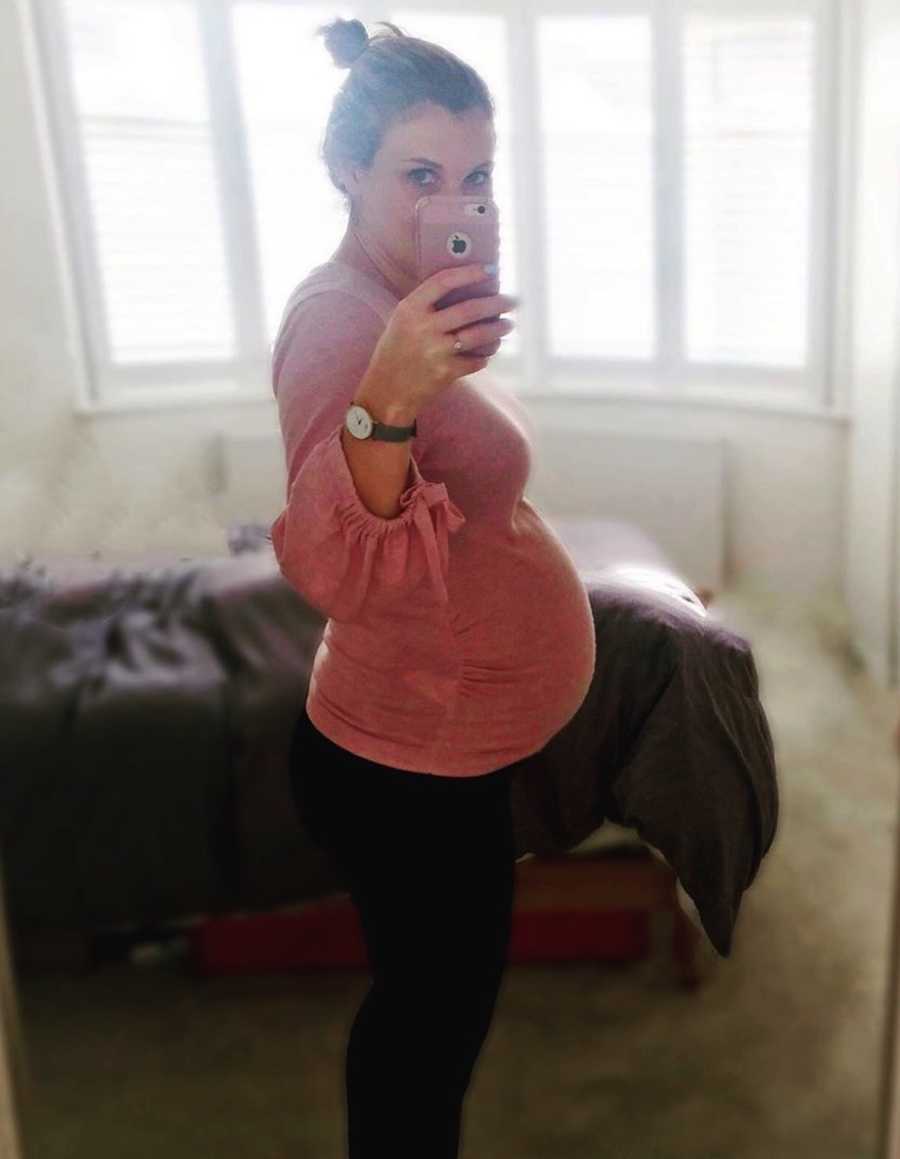
I was incredibly lucky to have one of the best TTTS consultants in the UK looking after me that day. As he performed the surgery, he watched an ultrasound machine, which showed clear images of what he was doing. I saw a little 3D hand on that screen and it broke me. I had distanced myself as much as possible from these babies because I didn’t dare believe they would make it. But that little hand made them real. The doctor told me gently he needed me to remain completely still — the one thing I couldn’t do was cry. I squeezed my eyes shut and pretended I was in an episode of Grey’s Anatomy. This was all just a TV show and wasn’t really happening to me. After it was over, we had a sleepless night waiting to see if the twins had survived. We stayed overnight in the hospital watching old episodes of Friends on Netflix because we couldn’t sleep. At 9 a.m., we were scanned and found we still had two heartbeats. Our boys had made it through the night but we were not out of the woods yet. A week later, things were slowly improving. However, we had to reach two weeks post-surgery to really know how successful it had been. When we reached that crucial ultrasound, all was looking well until they started scanning our recipient twin’s head. I had seen enough ultrasounds by then to know it didn’t look right and our consultant was spending a lot of time on it. He confirmed one of our babies had a major brain bleed and we would need to have a fetal MRI to understand what this would mean for him.
Two weeks later, my husband and I sat down with a neurologist and talked through the images of our babies’ brains. Our donor twin looked good but our recipient twin had sustained a lot of damage. His prognosis was not good. He would never walk, talk, or feed himself and had no possibility of leading a ‘normal’ life. We were in pieces. Through no fault of his own, our unborn child’s future had been changed forever. I couldn’t comprehend what was happening or even begin to imagine what our lives would be like.
The next morning was Good Friday. I woke early and called my sister. I had been staying in bed as much as possible as there’s a risk of early labor after the surgery but when I went to the bathroom, I noticed the tiniest bit of blood. I packed a bag, called my husband, and we went to the hospital to get checked. I was admitted for observation and fell asleep expecting to be home the next morning. In the middle of the night, I woke to the feeling of my water breaking. I felt completely hopeless. We had been through months of fear and worry and now this. The bleeding increased and hours later, I was having an emergency c-section. I cried all the way through. I didn’t care about the spinal or having a scar or how I felt physically. I just wanted it all to be over. I couldn’t believe these poor babies were being born so early and so sick with such a dismal future ahead of them. Our donor twin, Finn, was born at 8:44 a.m. on Easter Saturday, weighing 2 pounds, 3 ounces, followed one minute later by our recipient twin, Zack, weighing 2 pounds, 11 ounces. I couldn’t see Finn because he had to be ventilated immediately but I was able to give Zack a kiss. The boys were taken to NICU and I was taken to recovery.

I cried for my eldest son and what this would all mean for his life. I cried for myself and my husband and what our futures would be like. Most of all, I cried for my twins, who had done nothing to deserve this.
A few hours later, we were told Zack was struggling. With my legs still numb from the anesthetic, I was rushed to NICU in my hospital bed to cuddle him and say our goodbyes. I have never felt emotions like it. Crushing grief for my baby who was dying in my arms, along with a sense of relief he might be saved from the picture that had been painted to us of his life. I told him over and over how much I loved him. I kissed him and I held him close.
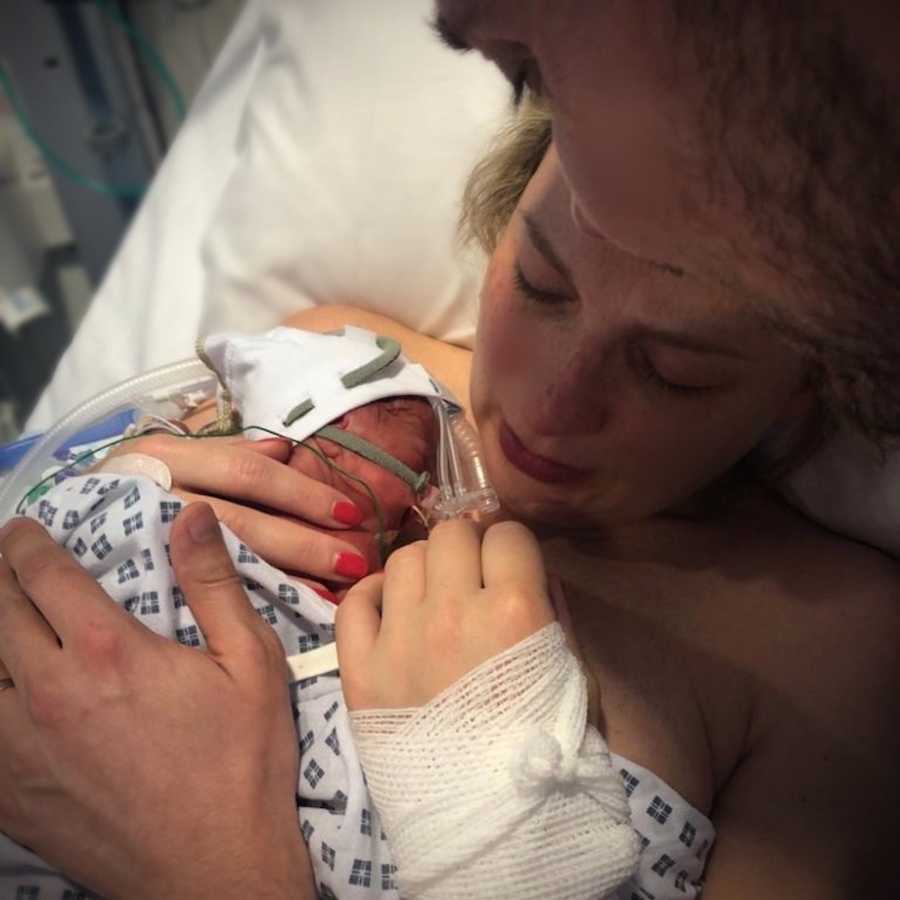
Zack listened. He fought, and he lived.
For the first few weeks of our twins’ lives, we were all over the place. On the one hand, our beautiful babies had survived, but on the other hand, we couldn’t get the neurologist’s words out of our heads. Our son would have no quality of life. For weeks after they were born, I cried every day. I was terrified of what the future would hold for our family. I had so many questions that nobody could answer. What would Zack be capable of? How would I cope with being a full-time carer to my son? Would Zack’s brothers be bullied for having a disabled sibling? Would he be able to get any enjoyment out of his life? I was desperate for answers and spent hours on Google and social media looking for people with similar experiences. My heart ached. I felt so sorry for my son, my beautiful innocent baby.
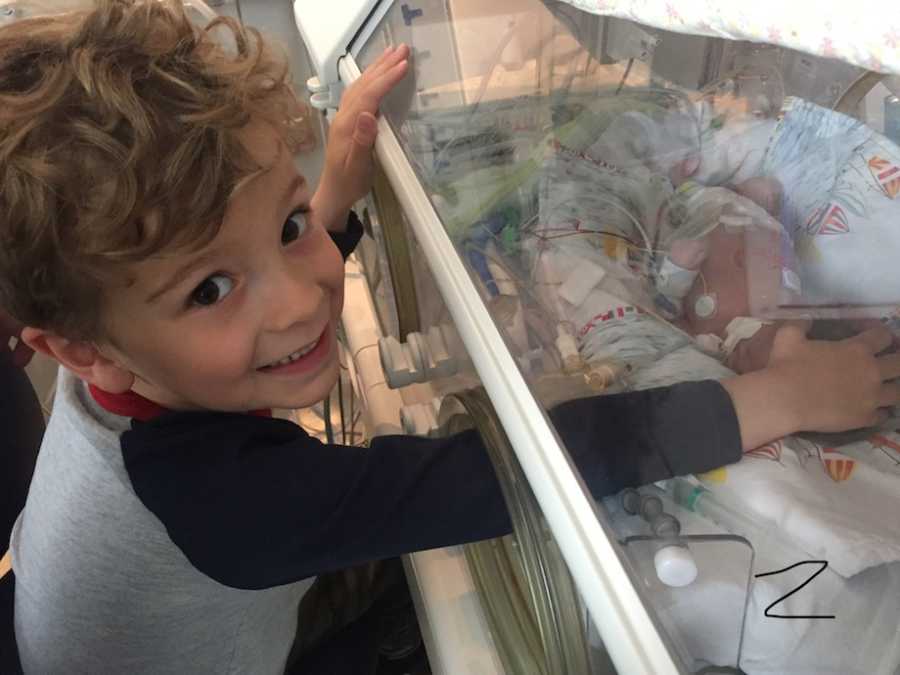

When he was just four weeks old, Zack became ill again, this time with Necrotising Enterocolitis, a very serious infection that affects the bowel. Zack deteriorated quickly and had to be transferred from our local hospital to a level 3 NICU over an hour away, where he had 13.5 cm of small bowel removed. He was incredibly ill and before he went into surgery, we were taken again to say our goodbyes. 50% of babies who are as sick as Zack was don’t make it, but if I knew anything about him by then, it was he is a fighter. Once again, he sailed through surgery like the absolute miracle that he is. This was a turning point for me and I suddenly realized I had to start fighting as hard as he was.
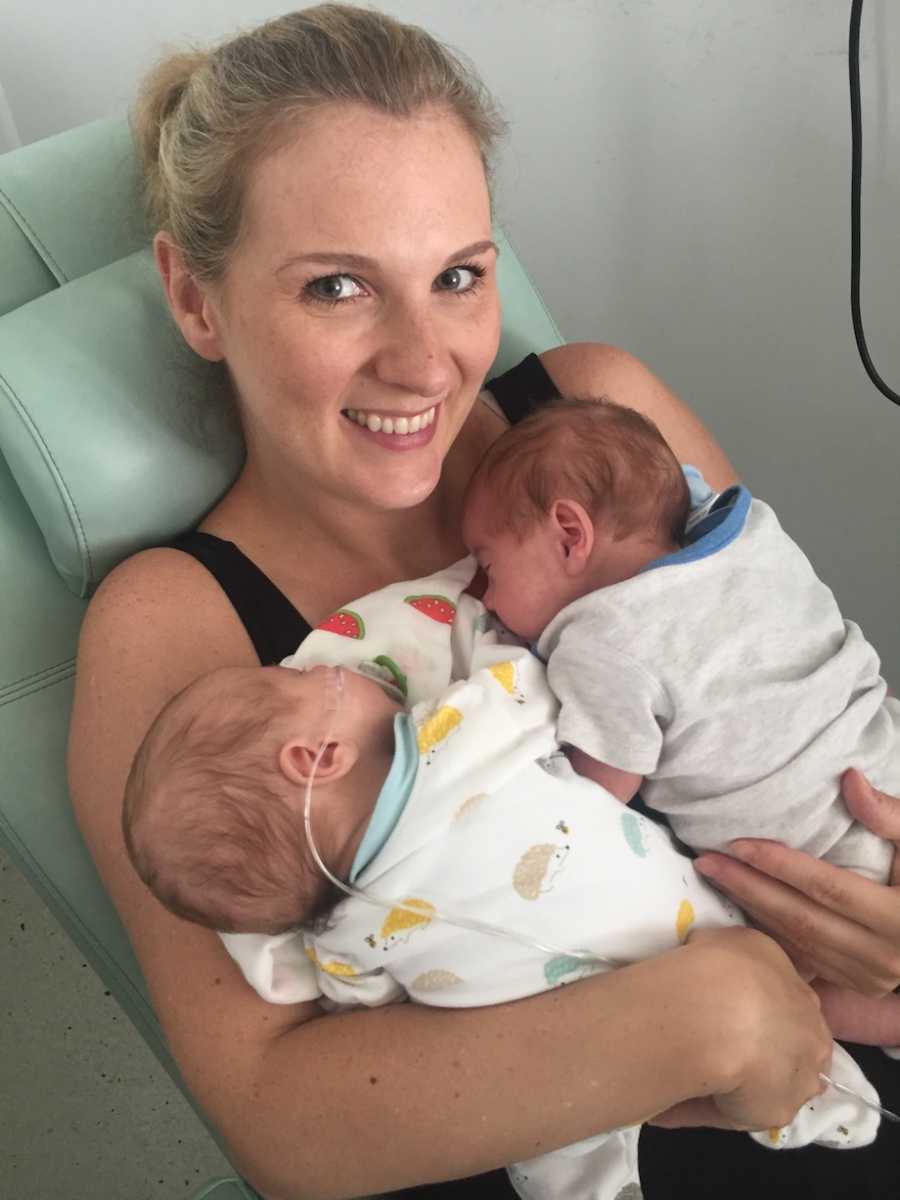
After 107 days in NICU, we finally got to take Zack home. Finn had come home a month earlier and at last, our family was together. Before Zack was discharged, he had an MRI that showed damage throughout his brain. We have been told to expect Cerebral Palsy but to what level, we don’t know. He has a bilateral squint (crossed eyes) and is at risk of learning and behavioral issues but at this point, it’s all just ‘wait and see.’
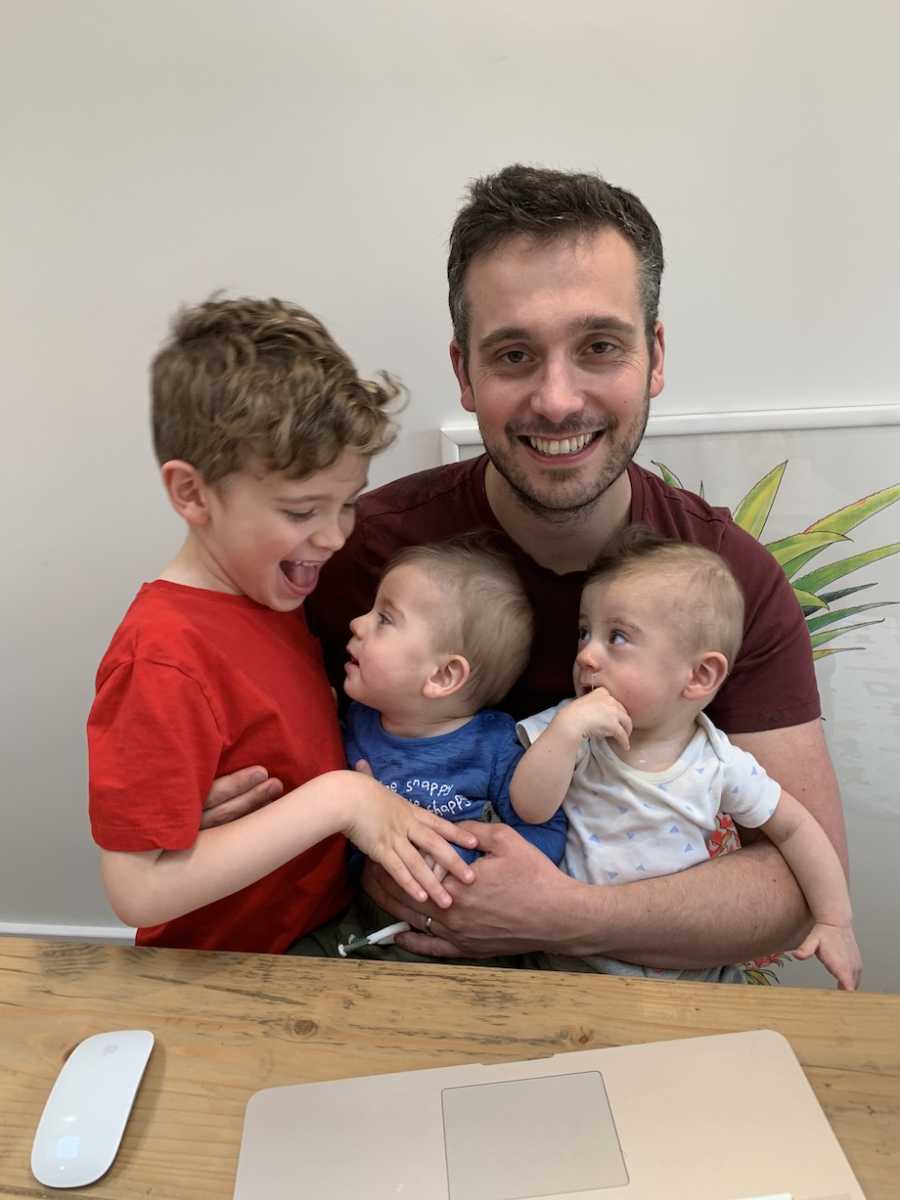
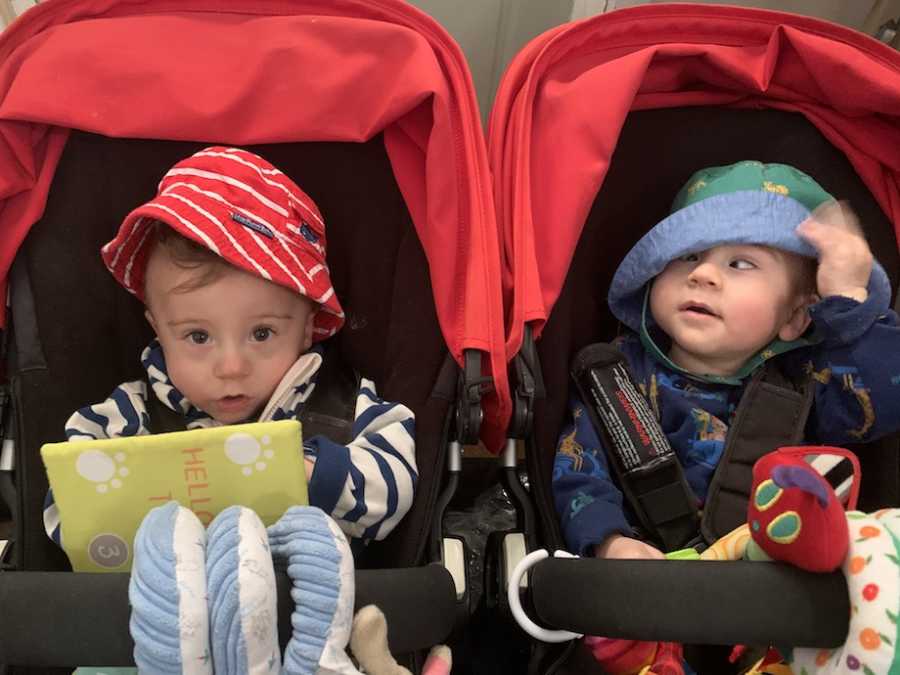
Our eldest son loves his brothers so much and is fiercely protective of them both. I am not a carer; I am a mother who gets to do the most rewarding job in the world of helping my children live their best lives. As for the question of quality life, I’ve never seen someone so happy, playful, and as loved as Zack.
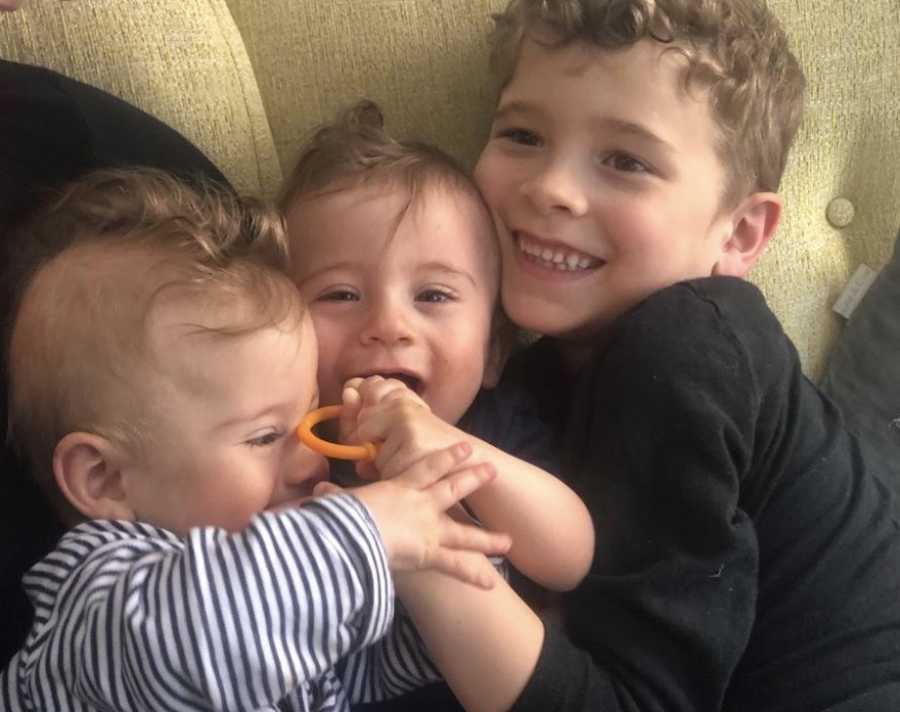
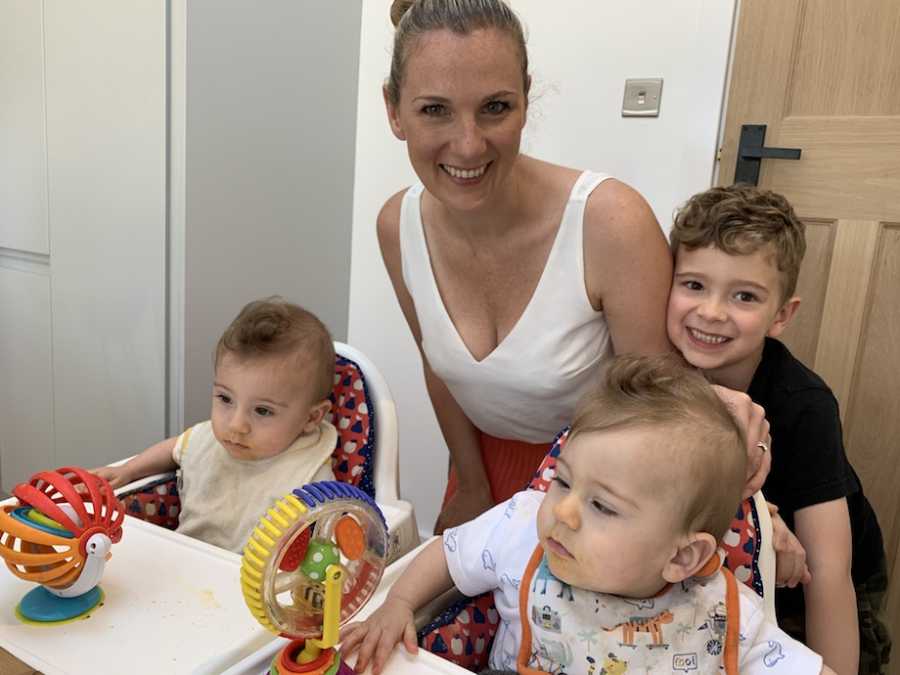
Of course, it’s been incredibly hard at times. Finn has also had some serious issues. As a result of his prematurity, he has had to have major throat surgery three times. He’s doing really well and I’m confident he will catch up with his peers. From the moment I got Zack home, I enlisted a private physio and have worked non-stop to improve his outcome. He is an amazing little boy and so incredibly determined. Nothing is going to stop him and I intend to make sure he gets to experience just as much as his brothers do.
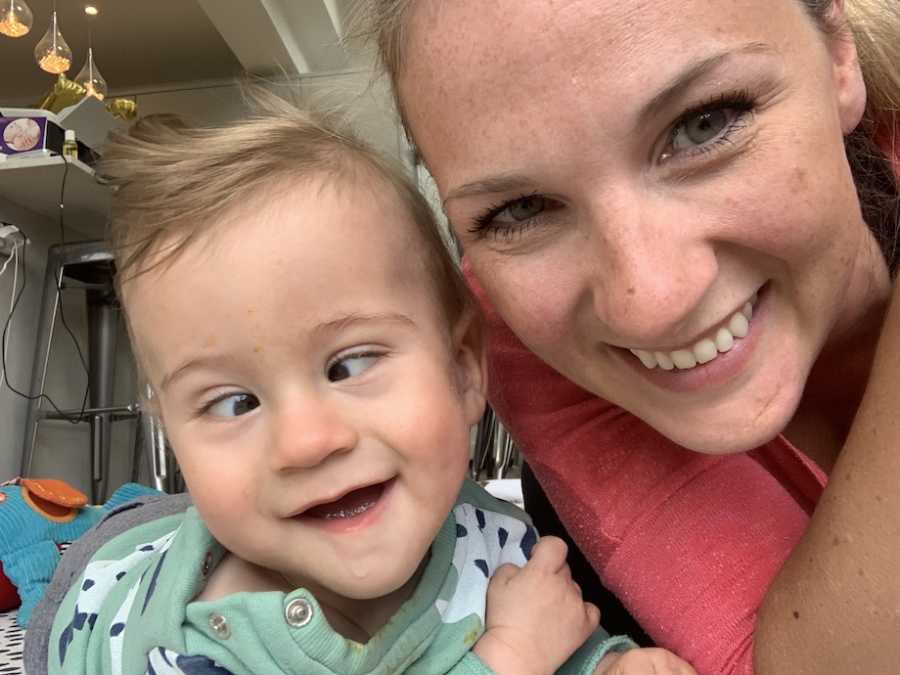
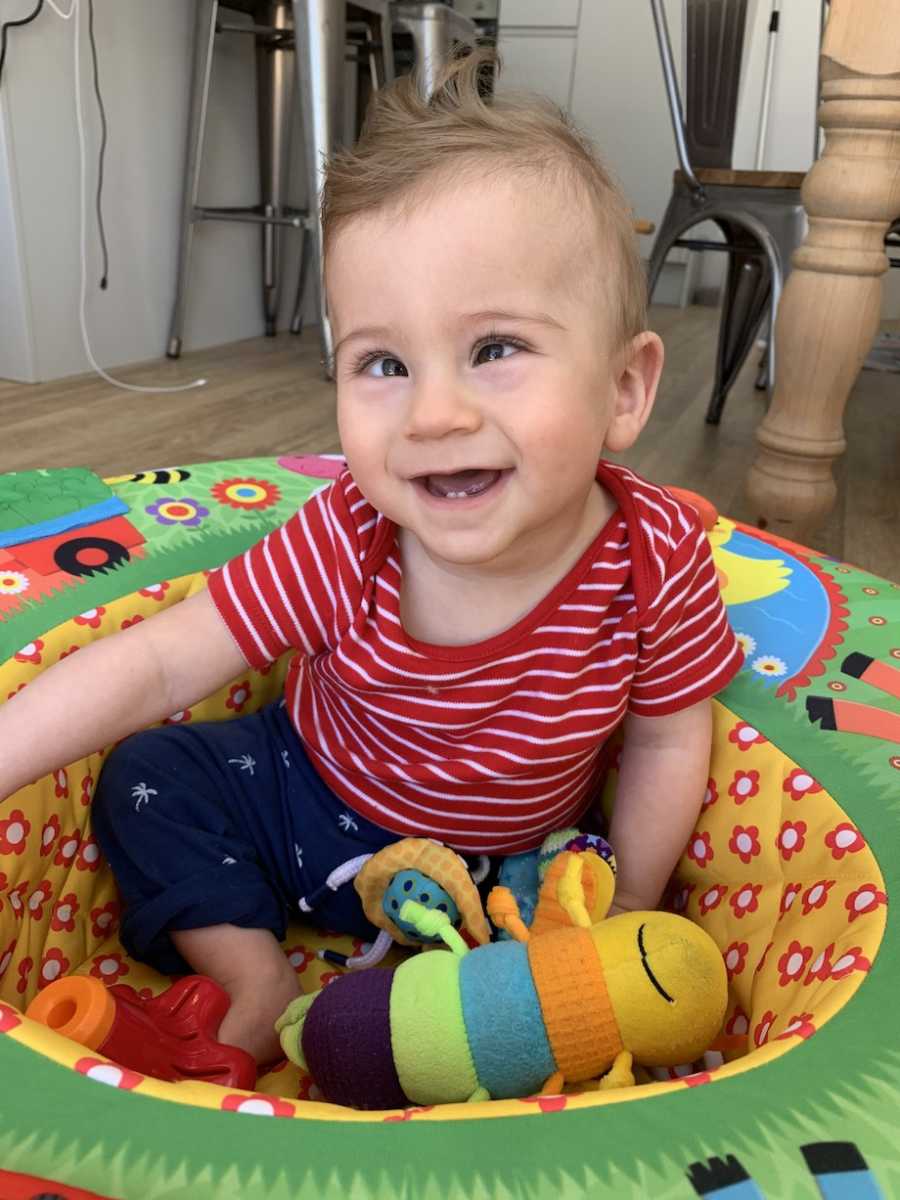
Since falling pregnant with the twins, I have been shocked at the lack of knowledge of TTTS among medical professionals. I truly believe if Twin to Twin Transfusion Syndrome was better understood and in our case, had been caught earlier, Zack’s outcome would have been different. His life has been changed and now he will have many challenges ahead of him. However, my boys are my miracles and our family is stronger and happier with them in it. Zack may have his struggles but I am so grateful he’s here. I will always worry about my children but whatever they have to face, I will be beside them every step of the way.”


This story was submitted to Love What Matters by Caroline Bishop from Hertfordshire, UK. You can follow their journey on Instagram. Do you have a similar experience? We’d like to hear your important journey. Submit your own story here. Be sure to subscribe to our free email newsletter for our best stories, and YouTube for our best videos.
Read more touching stories like this:
Do you know someone who could benefit from reading this? SHARE this story on Facebook with family and friends.

